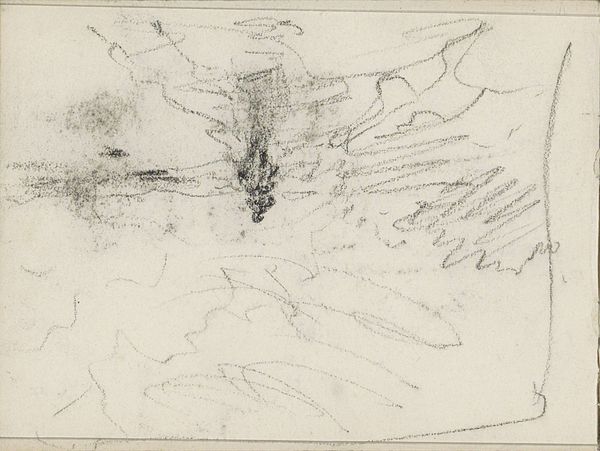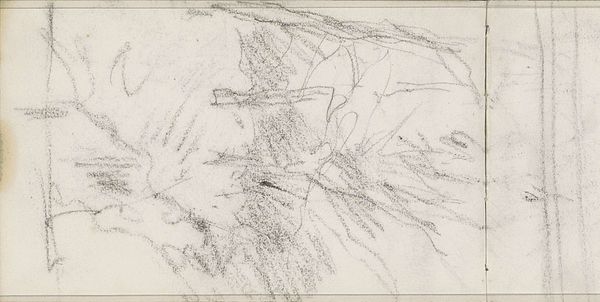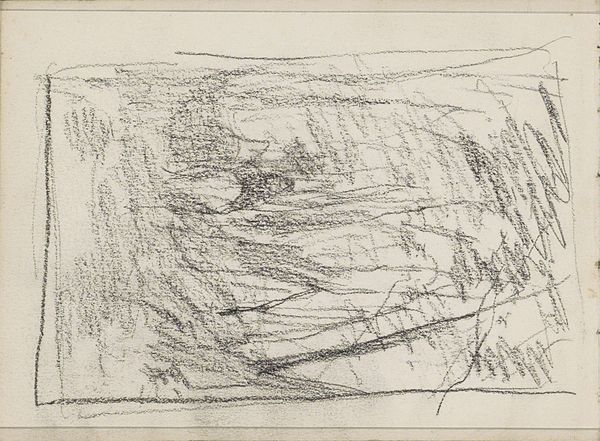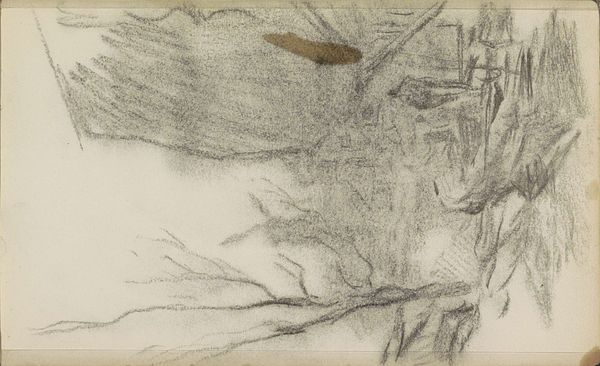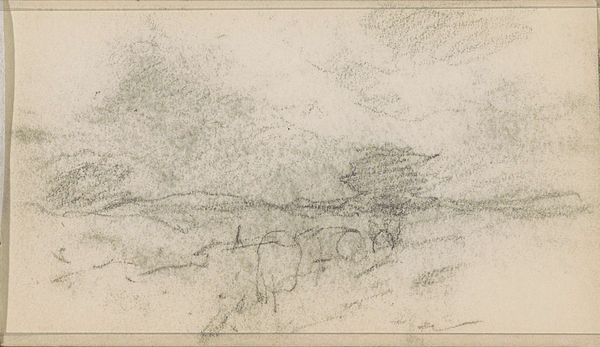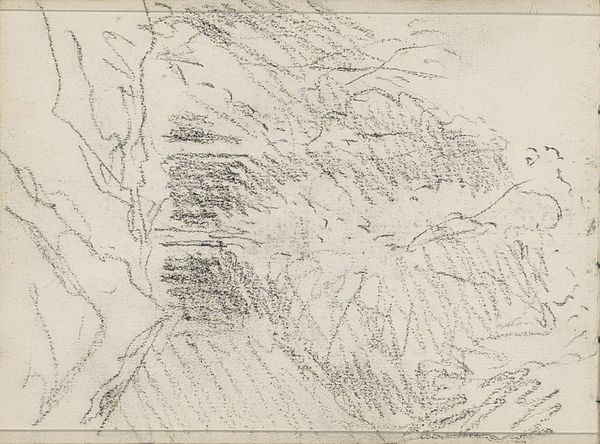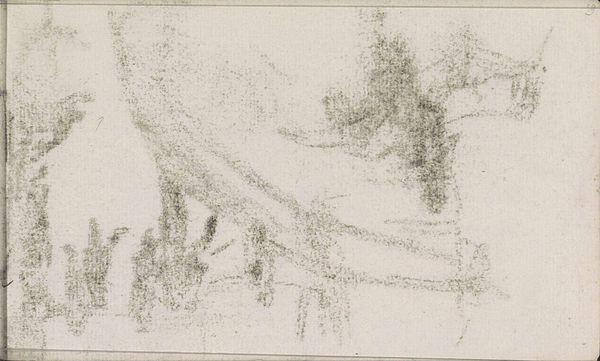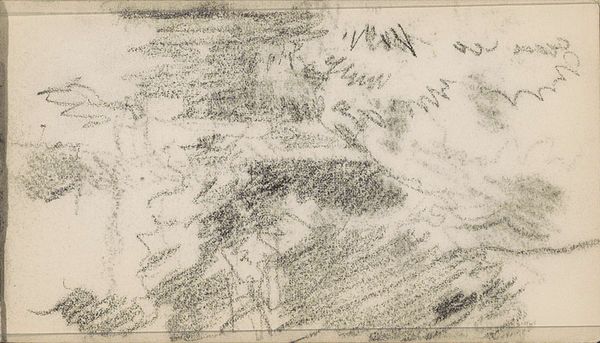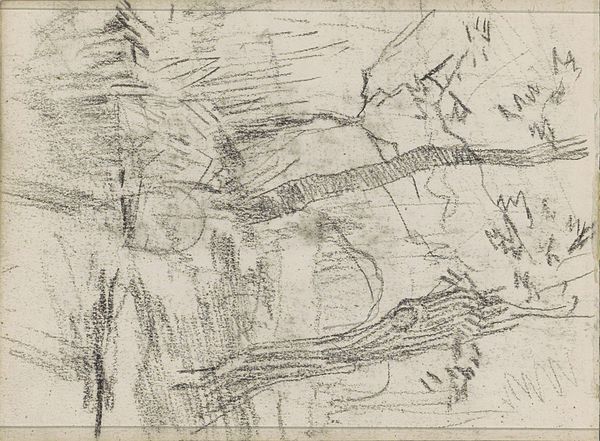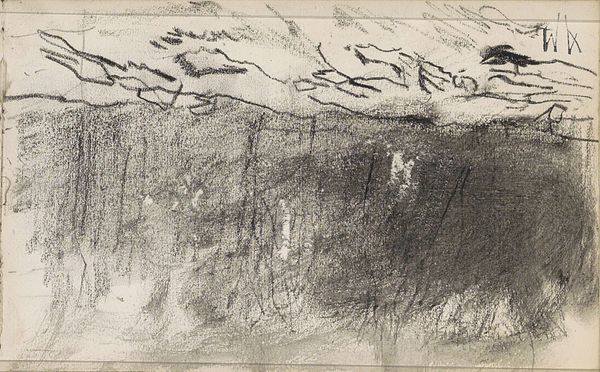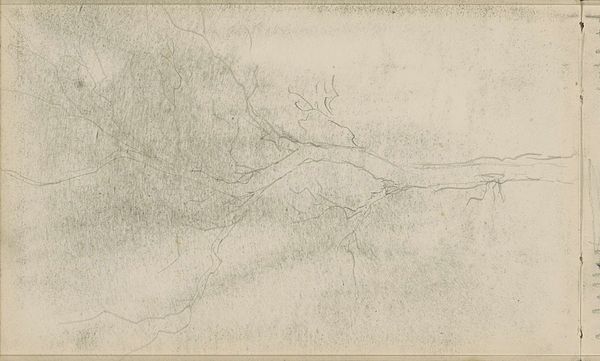
drawing, pencil, graphite
#
drawing
#
impressionism
#
pen sketch
#
pencil sketch
#
landscape
#
pencil
#
graphite
#
realism
Copyright: Rijks Museum: Open Domain
Editor: Here we have Anton Mauve’s “Landschap met bomen,” a landscape rendered in graphite around 1876 to 1879. It feels very immediate, like a fleeting impression. What strikes you most about this drawing? Curator: The immediacy you note points us to Mauve's artistic process. We see the very deliberate application of graphite, almost aggressively layered in certain areas, creating a tangible density. Consider the availability and cost of paper and graphite in the late 19th century—these materials weren't neutral. Editor: So the materials themselves held a different kind of significance back then? Curator: Absolutely. Graphite, while relatively accessible, still represented a degree of investment. The artist’s choice and handling of it indicates a considered, if rapid, execution. Moreover, note the paper; its quality and the implied purpose impact our understanding. Was this a preparatory sketch? Or was it intended as a standalone artwork? Think about the role of the art market. Was there a demand for smaller, more affordable works? Editor: That makes me see the work in a different light. It’s not just about the image, but about access and consumption. Curator: Precisely. The drawing also speaks to the evolving social status of landscape. What type of landscapes were popular during the late 19th century? Do those popularity contests reflect a longing for pastoral spaces amid increasing industrialisation and urbanization? Think about that too. Editor: So, Mauve's landscape isn’t just a pretty picture; it’s entangled with social and economic conditions. Thanks; I will definitely see all landscape drawing from the era differently. Curator: Glad to have helped bring a wider context to this piece for you. It's all in the materiality!
Comments
No comments
Be the first to comment and join the conversation on the ultimate creative platform.

